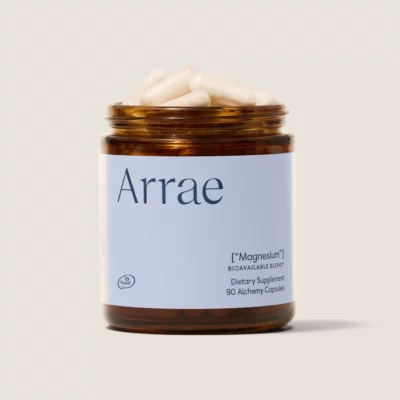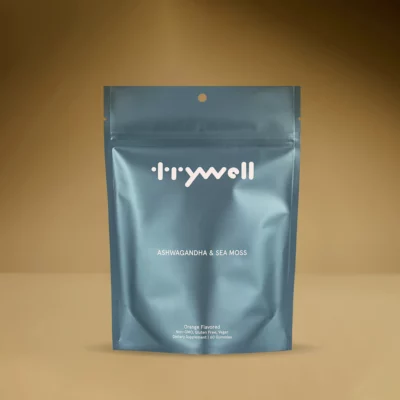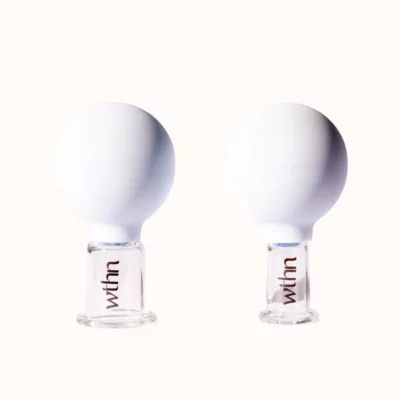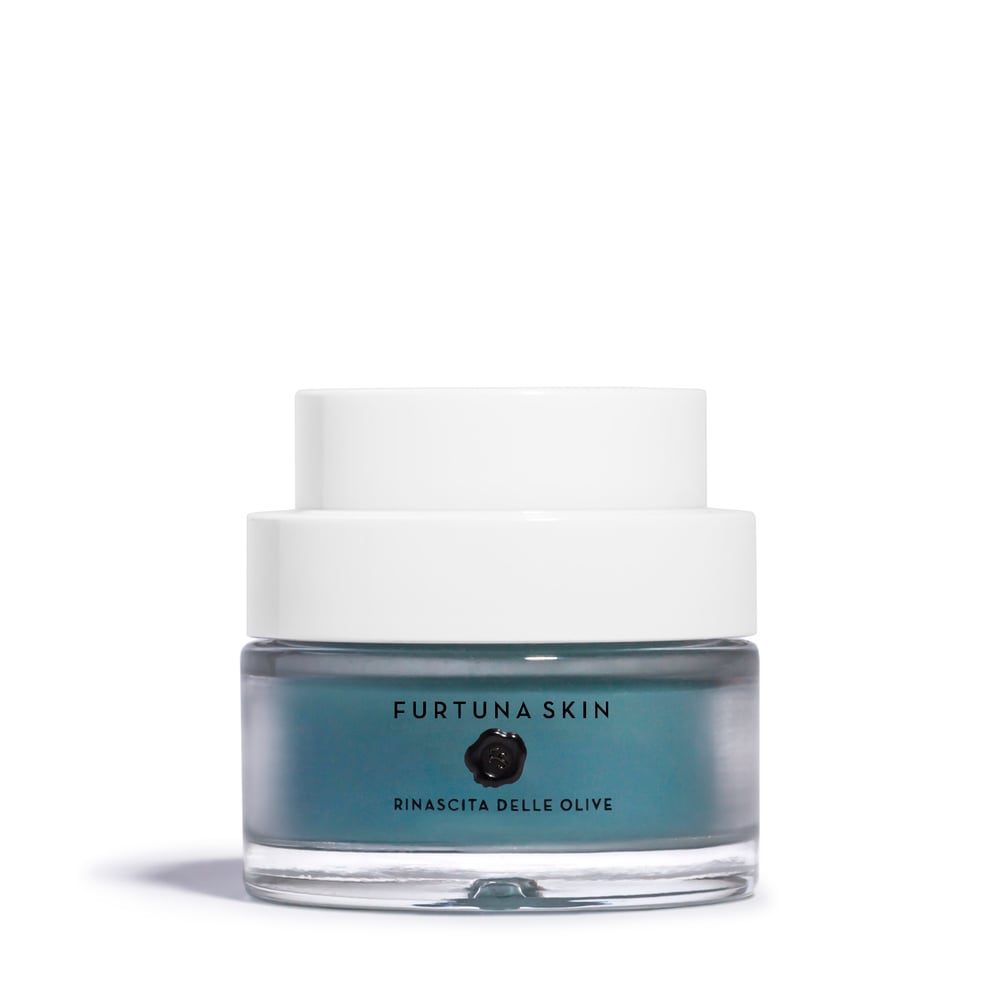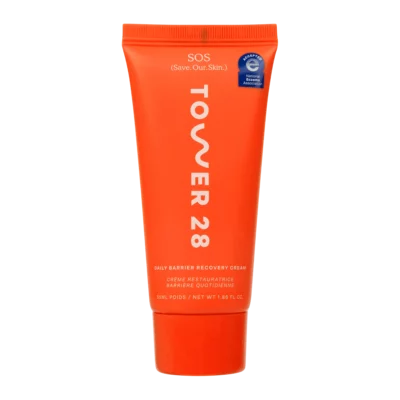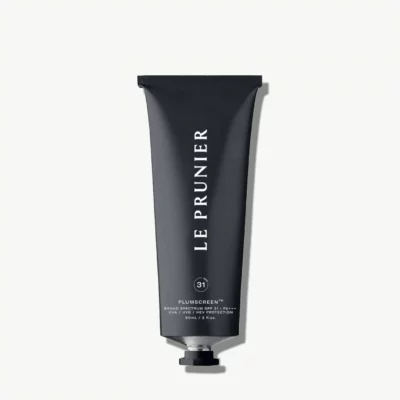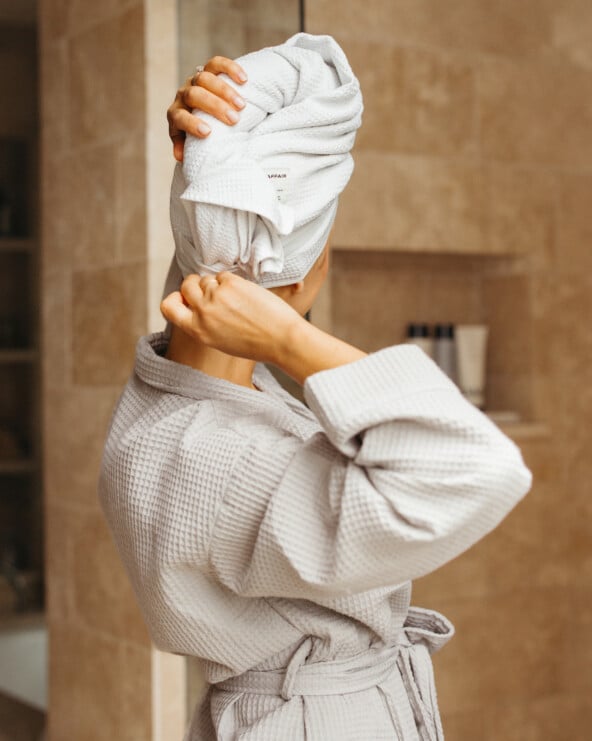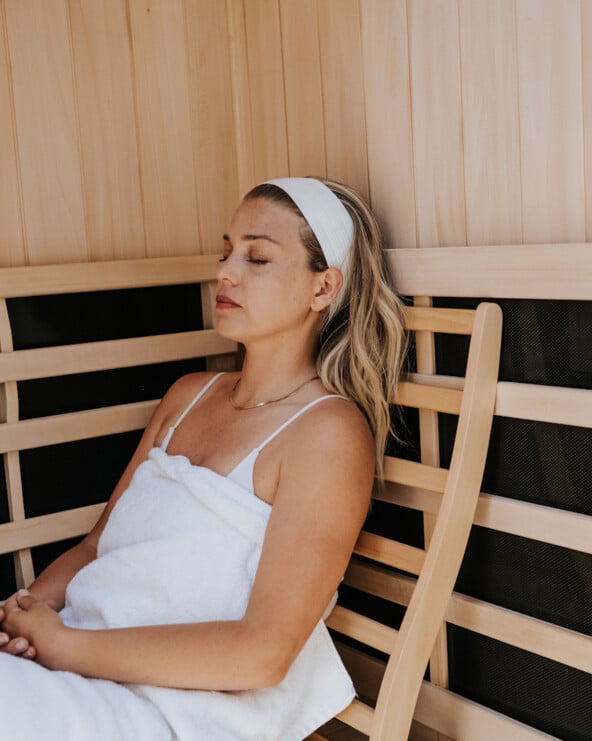We may receive a portion of sales if you purchase a product through a link in this article.
As they say, nothing is certain except death and taxes… and waking up with a puffy face. Maybe you’ve tried cutting out salt and going grain-free, or you’ve invested in an ’emotional support’ water bottle. Perhaps you’ve jumped on the ice-rolling train (or you’re dunking your face in ice water every AM without fail). You’ve tried everything—and yet, nothing changes. When it feels like you’ve exhausted every other option, that’s when you know: stress might be the culprit. The internet is calling it cortisol face, pointing to the connection between cortisol and skin health.
As much as we love the hydrating power of a sheet mask, this quick (and admittedly, relaxing) fix isn’t doing much to relieve stress in the long-term. Don’t get me wrong, I’m wearing a face mask as I write this. But if the build-up of stress is wreaking havoc on your skin and body, it might be time to take a deeper look at the link between cortisol and skin.
Featured image from our interview with Sanne Vloet by Michelle Nash.


Cortisol and Skin: The Surprising Connection
Cortisol is the stress hormone. Like all hormones, an imbalance can wreak havoc on your body. Poor gut health can lead to an imbalance of estrogen, and a Vitamin B deficiency can affect testosterone. While everyone’s timeline will vary, research shows that by taking a holistic approach to your health, you can balance your hormones in a matter of months. That’s why bringing cortisol levels back to a manageable place is so key—for your skin and every part of your well-being.
To learn more about cortisol face and the connection between cortisol and skin, I consulted Danuta Mieloch. Mieloch is a celebrity esthetician (she counts Naomi Campbell and Rosie Huntington-Whiteley among her clients), the owner of Rescue Spa, and founder of Danucera skincare. She knows the power of pairing intentional, topical treatments with good wellness habits, seeing the direct connection between skin-supporting and stress-relieving routines and healthy, resilient skin. Read on for Mieloch’s expert advice.



What is cortisol face?
Social media is full of dramatic transformations and before and after Reels illustrating the appearance of cortisol face. “Recognizing these signs allows us to provide targeted, effective treatments,” says Mieloch. But if you’ve experienced elevated cortisol for a while—perhaps without even noticing it or recognizing stress as your baseline—the visible effects might not be as apparent. According to Mieloch, elevated cortisol can manifest as:
- Puffiness. Wake up puffy after a night eating salty foods? Increased fluid and sodium retention is also a symptom of elevated cortisol.
- Increased redness. As your body tries to regulate in response to high cortisol, blood rushes to the skin, and increased blood flow can lead to redness. Redness is also a response to irritation caused by a compromised skin barrier.
- Acne. Cortisol causes increased sebum production, clogging your pores with excess oil.
- Slowed healing. Increased stress impairs the repair processes, leading to slowed healing.
- Inflammation. Cortisol leads to worsened inflammatory conditions and increased inflammation.
- Premature aging. As collagen and elastin break down, you might experience premature signs of aging, like fine lines and sun spots.
Cortisol and Skin Myths
As with anything that claims to dramatically change your life, there are lots of myths about cortisol and skin. Now more than ever, people are trying to find solutions to their cortisol problems.
Myth #1: Cortisol only causes acne
“Cortisol impacts more than just acne,” says Mieloch. Everyone’s skin reacts differently to stress, but elevated cortisol can cause everything from dryness to redness and sensitivity.
Stress can also break down your skin barrier. In fact, a damaged skin barrier is the number one sign of stressed-out skin. It can also exacerbate other skin concerns, increasing inflammation and skin sensitivity.
Myth #2: Cortisol has an immediate effect on the skin
Despite what you may hear about “dysregulation” online, occasional, short-term spikes of cortisol aren’t doing too much damage. Stress is a fact of life—with all there is to be stressed about every day, it’s a normal response to stimuli, and in small amounts, experiencing stress can help us cope. However, if cortisol levels remain elevated for a prolonged period of time (some sources note six months or more), chronic stress may be at play.
According to Mieloch, it’s chronic stress—”not short-term spikes”—that contributes to changes in the skin. If you’re experiencing chronic stress, there might not even be an immediate stressor present, but your cortisol will remain elevated—and the effects will show on your skin.
Myth #3: Only psychological stress affects the skin
“Physical stress also elevates cortisol, affecting the skin,” says Mieloch. This is a type of stress that occurs when our body is exposed to factors causing physical strain, thus triggering a stress response. Physical stress can look like everything from environmental toxins to poor diet to sleep deprivation and even our workouts.

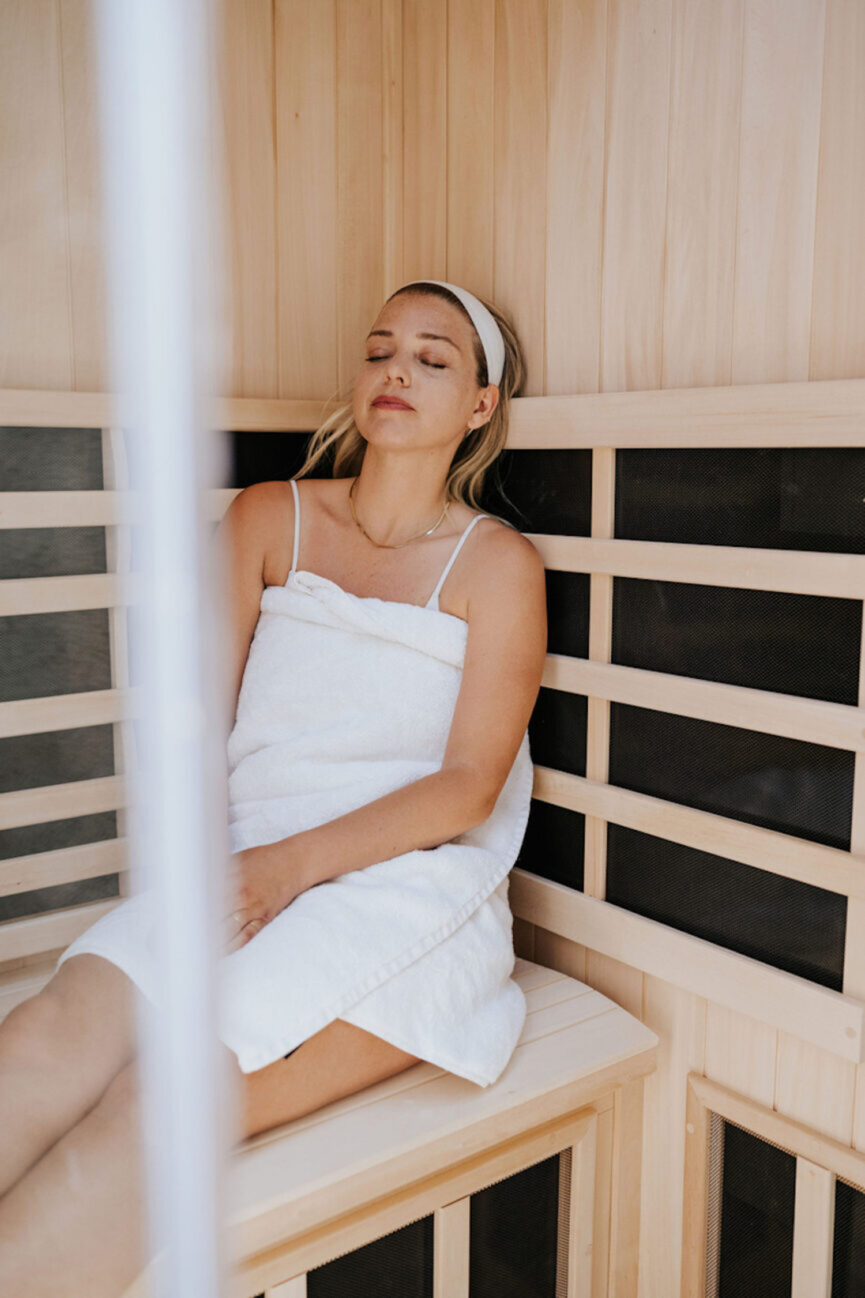
Stress-Relieving Practices to Add to Your Routine
Just as lifestyle factors can contribute to stress, they can also help relieve it. Countless healthy habits can support your journey in decreasing the impact of cortisol on your skin.
Prioritize low-impact movement.
Regular exercise doesn’t have to be intimidating. Whether it’s dancing in your living room or crushing it at the gym, incorporating movement into your day helps you release stress. However, it’s important to be mindful about the type of movement you’re doing and your recovery process. As shared, exercise puts physical stress on the body. Studies have found that HIIT workouts can significantly increase cortisol levels immediately post-workout and that cortisol levels can remain elevated afterward.
If reducing cortisol’s impact on your skin is the goal, low-impact movement can be a powerful tool. Everything from walking to yoga to slow, strength-focused movements is a good route to pursue.
Engage in mindfulness.
A few moments of mindfulness can do wonders for your cortisol levels and, therefore, your skin. By taking some time to focus on deep breathing, you can take the body out of fight or flight mode and quiet the noise in your head. Mieloch recommends methods of mindfulness such as nasal breathing or breathwork in general. Practices like yoga and tai chai help combine movement and mindfulness for a total-body reset. Tip: You can also practice mindfulness all throughout your day. This guide to living more mindfully is a great place to start.
Moderate your caffeine intake.
Caffeine is a stimulant, raising your heart rate and spiking cortisol levels. (If you’re on your third cold brew while reading this, do a quick body scan and notice if you’re feeling more anxious than energized.) Try replacing one of your caffeinated beverages with a hydrating drink. Before your morning coffee, try making sexy water—the hydration trend that makes drinking water fun and more effective.
Connect with your community.
While often overlooked, the importance of making time for the people in your life can’t be overstated. Seeking support during stressful times is one of the best things you can do for your long-term health. Sometimes, a good heart-to-heart can be the best medicine.


What supplements reduce cortisol?
To help support your lifestyle changes, Mieloch recommends the following supplements:
- Ashwagandha. This is potentially one of the most impactful supplements for stress. It changes how your body metabolizes cortisol and is a pillar of Ayurvedic medicine.
- Rhodiola Rosea. This adaptogenic herb helps promote balance and sustainable energy.
- Omega-3 Fatty Acids. These aren’t just good for your heart—they’re also fantastic for your skin and stress levels. They can help reduce inflammation in the body and may even support plump, hydrated skin. You can get them from fish oil supplements or, if you’re plant-based, from algae-based options.
- Magnesium. Most women are deficient in magnesium. Find the right type for you, and you can decrease cortisol as well as increase energy, get better sleep, and experience a host of other benefits.
- Stress relieving teas. Different tea blends have been used for centuries to address a variety of issues. Take your pick from chamomile, jasmine, green tea, and other calming blends.
Shop Supplements for Cortisol and Skin


The Best Skincare Routine for Cortisol Face
While addressing cortisol starts at the lifestyle level, there are some steps you can take to remedy the effects of cortisol on the skin. If you’re experiencing stressed skin and a broken down skin barrier, Mieloch recommends sticking to the basics. “Get regular facials and follow good skincare habits,” she says.
She says a skincare routine for cortisol face should include:
- Anti-inflammatory clean beauty. “No-fragrance skincare can help keep inflammation at bay. Avoid super active products and using too many products in general.”
- Moisturizers. Stressed skin is dehydrated skin. The right moisturizers can soothe and calm the skin while building back your moisture barrier.
- Sunscreen. Sunscreen prevents further damage to your skin and further premature aging. It also protects from environmental stress and UV damage.
Mieloch also recommends at-home facial massages to support blood flow and lymphatic drainage in the face. By using your favorite multi-benefit face mask and a massage tool like an ice roller or gua sha stone, a thorough facial massage can help prevent cortisol face.



